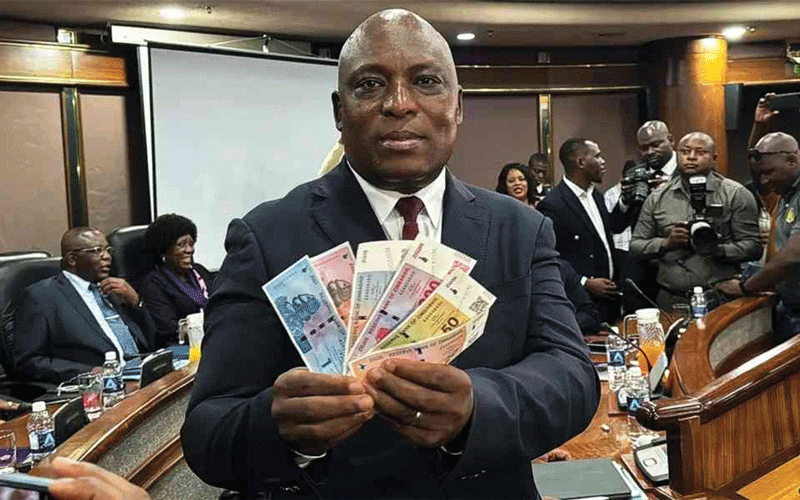
IN August 2024, Zimbabwe witnessed a significant rise in inflation across various indices, including the blended rate, United States dollar (US$), and Zimbabwe Gold (ZiG) bases.
The month-on-month blended inflation rate increased to 0,4% from -0,1% in July, while the US$ inflation rate stood at 0,2%, and the ZiG inflation rate surged to 1,4%. This upward trend in inflation has sparked concerns about the country's economic stability, particularly in light of the ongoing depreciation of the local currency.
Traditionally, exchange rate fluctuations have been directly linked to local currency inflation. However, the recent increase in US$ inflation in Zimbabwe, despite stable US$ inflation in the United States at around 2,9%, suggests that exchange rate disparities may also be influencing US$ inflation within Zimbabwe.
In August, Zimbabwe's annual US$ inflation rate reached 3,7%, reflecting the complex interplay between exchange rates and inflation in the country.
Several factors contributed to the inflationary pressures observed in August, including supply chain disruptions, higher production costs, seasonal variations, and policy changes. However, these factors are all intertwined with exchange rate disparities, which directly drive ZiG inflation and indirectly affect US$ inflation.
A key driver of inflation during this period was the significant increase in the Consumer Price Index (CPI) for Food and Non-Alcoholic Beverages. This sector's price hikes can largely be attributed to formal retailers seeking to hedge against anticipated exchange rate losses.
Given that food constitutes a substantial portion of the CPI, any price changes in this category have a pronounced impact on overall inflation. Formal retailers in Zimbabwe are required to apply the official (interbank) exchange rate for pricing, unlike in the informal sector, where pricing is more flexible. In August, the ZiG depreciated by 0,3% against the US$ on the interbank market and by 2% on the parallel market.
This depreciation led to higher ZiG prices on the shelves of formal retailers, contributing to an increase in month-on-month inflation.
- Mavhunga puts DeMbare into Chibuku quarterfinals
- Bulls to charge into Zimbabwe gold stocks
- Ndiraya concerned as goals dry up
- Letters: How solar power is transforming African farms
Keep Reading
To mitigate the impact of currency depreciation, formal retailers have increasingly adopted the US$ as their base pricing currency, with ZiG prices being directly translated based on the prevailing exchange rate. This strategy is essential for retailers who have foreign currency obligations, primarily through imports. Ensuring liquidity in foreign currency is crucial for these businesses, and management must implement pricing models that preserve value and hedge against currency translation losses.
Given that the exchange rate is regulated and pricing is pegged to the US$, formal retailers have little choice but to increase US$ prices to safeguard value when converting to ZiG at the prevailing exchange rate. This strategy also accounts for the exchange premium, which currently hovers around 77%.
For instance, if the official exchange rate is ZiG14 per US$1 and the parallel rate is ZiG26, a loaf of bread that typically costs US$1 would need to be priced at around US$1,85. This would result in a converted price of ZiG26, effectively preventing exchange losses arising from the exchange premium when foreign currency is scarce in the formal market.
This dynamic has led to a worrying rise in US$ inflation. The only scenarios in which US$ prices might not escalate are if the official exchange rate aligns more closely with market forces, reducing the exchange premium to below 10%, or if banks can meet retailers' foreign currency needs promptly through the interbank market.
In other words, curbing US$ inflation moving forward will require targeted policy intervention. Failure to address this issue could lead to a decline in activity within the formal sector, as the informal sector, with its less stringent regulatory environment, remains more price-competitive.
The current situation, where ZiG prices rise in response to increasing US$ prices and US$ prices escalate to hedge against exchange losses, creates a precarious economic environment.
With an exchange premium of approximately 77%, Zimbabwe's exchange rate and inflation stability are on a precarious footing, poised for potential disruption in the medium term if appropriate policy measures are not implemented.
- Duma is a financial analyst and accountant at Equity Axis, a leading media and financial research firm in Zimbabwe. — twdumah@gmail.com or tinashed@equityaxis.com, X: TWDuma_






